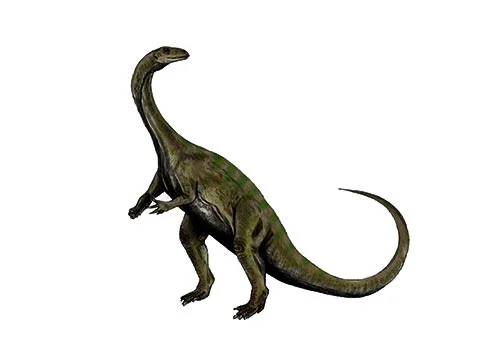Massospondylus (longer vertebra)

Mas-so-spon-de-lus
Richard Owen - 1854
Herbivore/Possibly Omnivore
Estimated 4-5 meters long
Sauropod
M. carinatus (type), M. kaalae
Lesotho - Upper Elliot Formation, South Africa - Clarens Formation, Upper Elliot Formation, and Zimbabwe - Forest Sandstone Formation, Mpandi Formation, Upper Karroo Sandstone Formation
Early Jurassic, 200 million years ago
Massospondylus Facts
Massospondylus is a genus of early sauropodomorph dinosaur that lived during the Early Jurassic period, around 200 million years ago. Its fossils have been found in South Africa and Zimbabwe, and it is known for its elongated vertebrae which give it its name, meaning “longer vertebra”.
Massospondylus was a relatively small dinosaur, measuring around 4-5 meters (13-16 feet) in length and weighing around 150-200 kg (330-440 lbs). It had a long, slender neck and tail, with a small head and toothless beak. Its front limbs were shorter than its hind limbs, and it walked on all fours.
One of the most interesting things about Massospondylus is that it is one of the best-known early dinosaurs, with numerous fossil specimens found in both juvenile and adult forms. This has allowed scientists to study its growth and development in great detail. It is also one of the most well-studied early sauropodomorphs, and has provided important insights into the evolution of this group of dinosaurs.
Massospondylus is believed to have been an herbivore, feeding on ferns and other plants that were common during the Early Jurassic. It likely used its beak to crop vegetation, and its long neck may have allowed it to reach high into trees to access leaves and other food sources.
Massospondylus is also important for its role in the early evolution of the sauropod dinosaurs, a group of long-necked herbivores that includes some of the largest land animals to ever live. Its elongated vertebrae and other features of its skeleton suggest that it was an early member of this group, and that the adaptations for herbivory and long-necked locomotion developed gradually over time in these dinosaurs.



